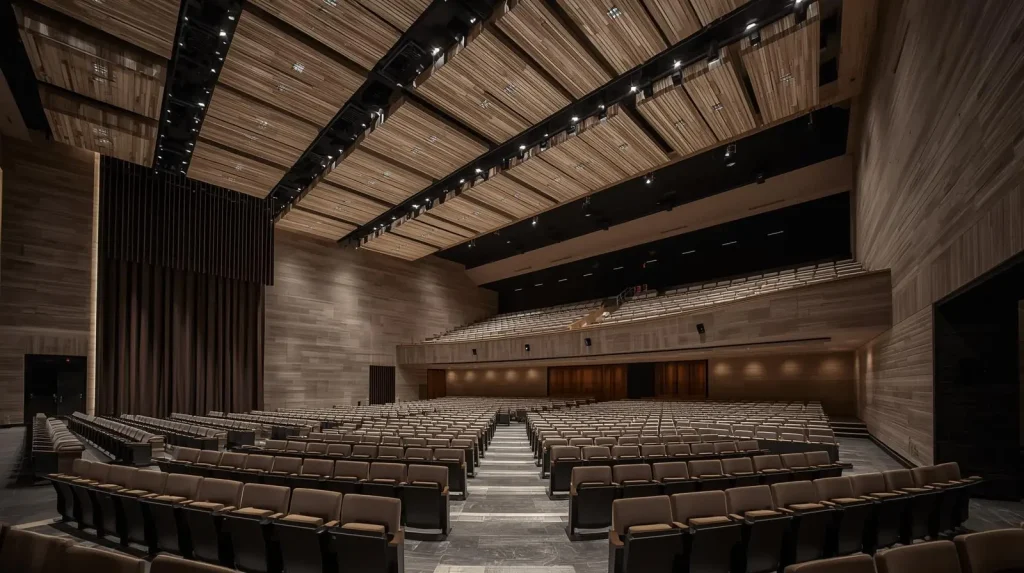Creating a high-quality sound environment in large venues is one of the most overlooked aspects of architectural design. Whether it is a concert hall, lecture auditorium, or multipurpose space, the way sound behaves inside can make or break the experience for audiences. Poor acoustics lead to echoes, muffled voices, or unbalanced sound distribution, while good acoustic treatment ensures clarity, warmth, and balance.
This guide will walk you through everything you need to know about acoustic treatment for halls and auditoriums. From understanding the basics of sound behavior to implementing effective solutions, we will cover strategies that transform any large space into an acoustically optimized venue.
Why Acoustic Treatment Matters in Large Spaces
Large halls and auditoriums face unique acoustic challenges because of their size, shape, and intended use. Without proper treatment, issues such as echo, flutter, or uneven sound coverage arise. These problems affect not only performers and speakers but also the entire audience.
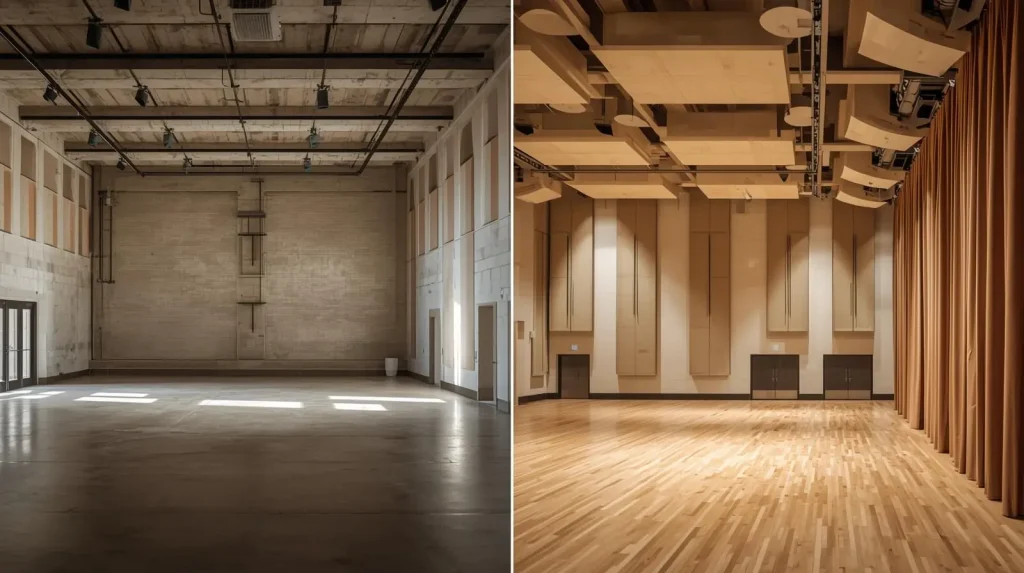
Key reasons why acoustic treatment is essential:
- Speech clarity: Ensures every word is understood in lectures or presentations.
- Balanced sound: Distributes music evenly across the room, regardless of seating position.
- Audience comfort: Reduces fatigue caused by harsh reflections or excessive reverberation.
- Professional standards: Meets the expectations of modern performance spaces.
Understanding Sound Behavior in Halls and Auditoriums
Before exploring treatment options, it is important to understand how sound behaves in large rooms.
Reflection and Echo
When sound waves hit hard surfaces such as walls, ceilings, or floors, they bounce back into the room. In large halls, this creates echoes and makes speech unintelligible.
Reverberation
Reverberation refers to how long sound lingers after being produced. While some reverberation is natural, too much creates a wash of noise.
Absorption and Diffusion
- Absorption: Soft materials such as acoustic panels soak up sound energy, reducing reflections.
- Diffusion: Specialized surfaces scatter sound waves to prevent hot spots and dead zones.
Understanding these concepts is the foundation of effective acoustic treatment.
Key Acoustic Treatment Solutions for Halls
Designing an acoustically friendly auditorium requires a balance of multiple solutions.
Acoustic Wall Panels
Wall panels are one of the most effective tools for controlling reflections. They are made of sound-absorbing materials that minimize echo and improve clarity. For large halls, panels should be strategically placed at reflection points.
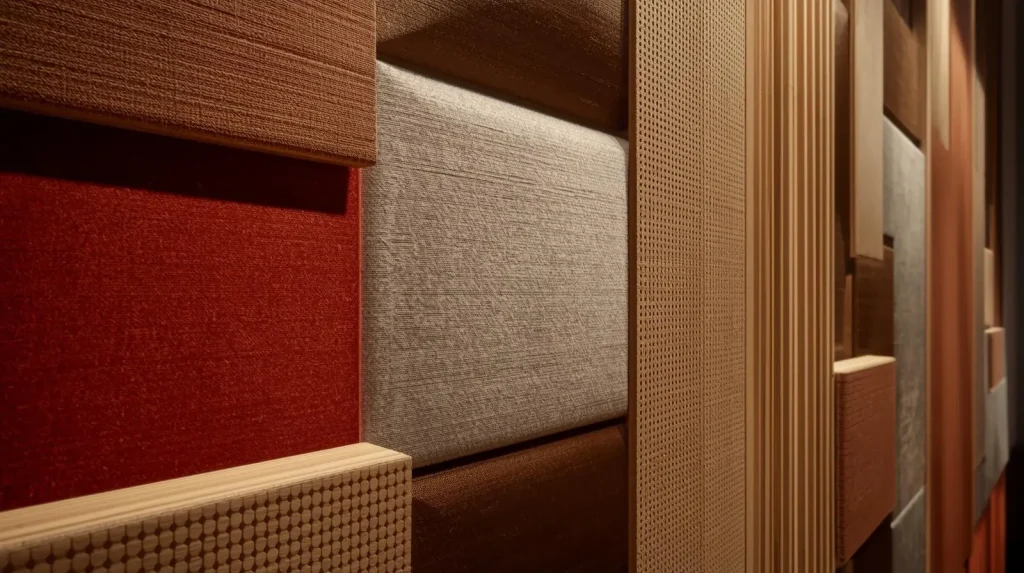
Ceiling Clouds and Baffles
High ceilings often amplify reverberation. Hanging ceiling clouds or vertical baffles helps absorb sound energy from above, preventing long echoes.

Bass Traps
In multipurpose halls where low-frequency instruments are common, bass traps reduce muddiness. Placing them in corners ensures a cleaner, more balanced sound.
Diffusers
Diffusion elements scatter sound rather than absorb it, maintaining a natural feel while preventing sound concentration in one spot. They are especially useful in concert halls.
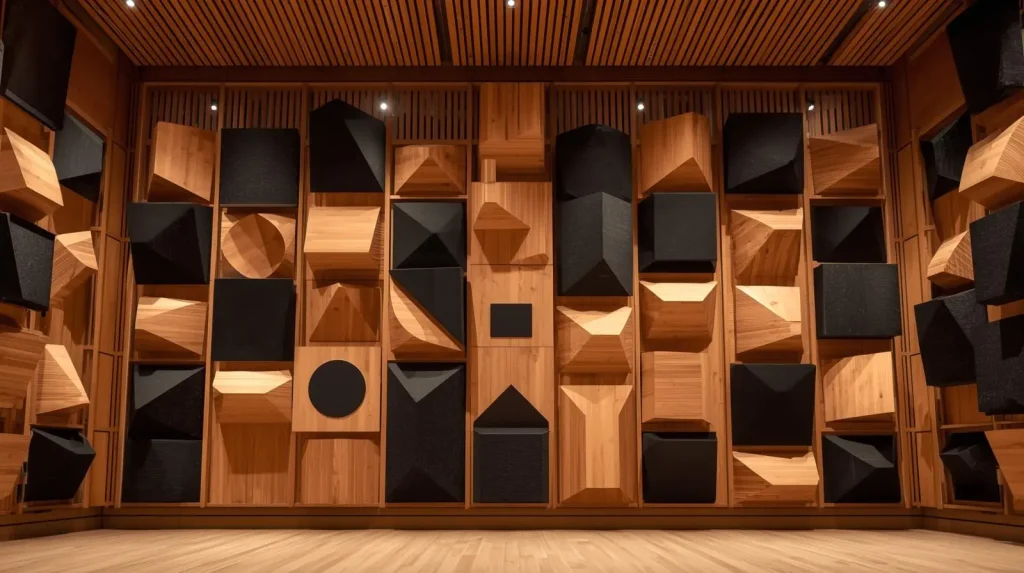
Acoustic Treatment Design for Different Venues
Not all halls are designed for the same purpose. The right treatment depends on the type of events hosted.
Lecture Halls and Auditoriums
- Prioritize speech intelligibility.
- Use wall panels and ceiling baffles to control reflections.
- Consider microphone and speaker placement alongside treatment.
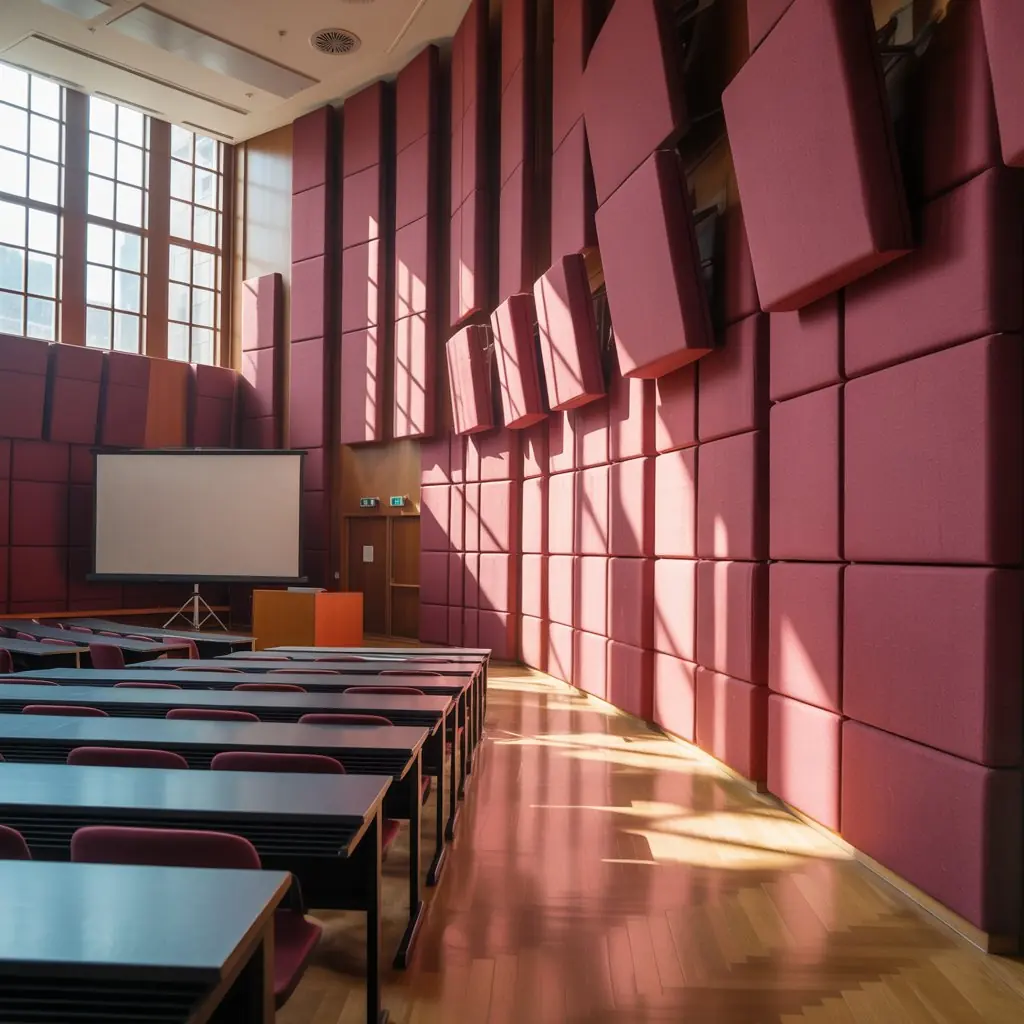
Concert Halls
- Balance absorption and diffusion for natural sound.
- Use diffusers on the back wall to create an immersive experience.
- Allow for some reverberation to enhance musical performances.
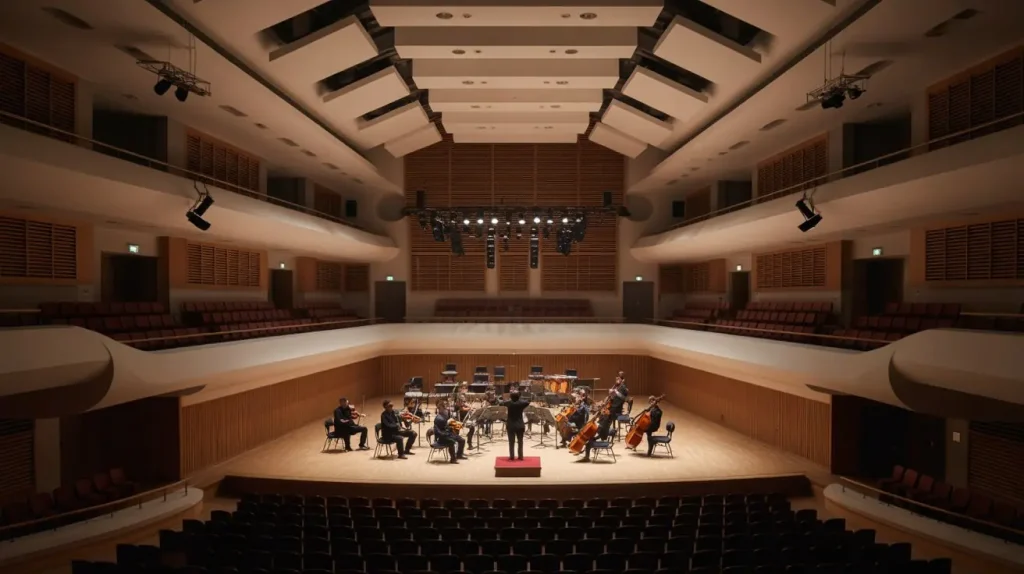
Multipurpose Venues
- Flexible solutions such as movable panels and adjustable acoustic curtains.
- Balance between speech-focused and music-focused treatment.
Factors to Consider Before Installing Acoustic Treatment
When planning treatment for a hall or auditorium, several factors must be considered to achieve optimal results.
- Room size and shape: Larger spaces require more strategic planning.
- Intended use: A lecture hall needs different acoustics than a concert venue.
- Materials used in construction: Glass, concrete, and metal increase reflections.
- Audience capacity: People themselves absorb sound, so the number of seats matters.
- Budget and flexibility: Acoustic treatment can be tailored to fit different budgets.
Common Mistakes to Avoid
Even with the best intentions, many venues suffer from poorly executed acoustic treatment. Avoid these common pitfalls:
- Overusing absorptive panels, creating a “dead” sound.
- Ignoring low-frequency problems in large halls.
- Failing to integrate speaker systems with acoustic design.
- Treating only one surface instead of balancing across walls, ceiling, and floor.
Benefits of Professional Acoustic Treatment
While DIY solutions may work in small spaces, large halls and auditoriums often require professional expertise. Acoustic consultants bring advanced measurement tools and experience to design custom solutions. Benefits include:
- Accurate sound modeling of the hall.
- Tailored recommendations for panels, diffusers, and layouts.
- Long-term cost savings by avoiding ineffective treatments.
Future Trends in Acoustic Design
With technology advancing, modern auditoriums are adopting new approaches to acoustic treatment.
- Adjustable acoustics: Movable panels and curtains allow flexibility for different events.
- Sustainable materials: Eco-friendly acoustic panels made from recycled fibers.
- Digital sound simulation: Virtual modeling before construction or renovation.
These trends make it easier to design versatile and environmentally conscious venues.
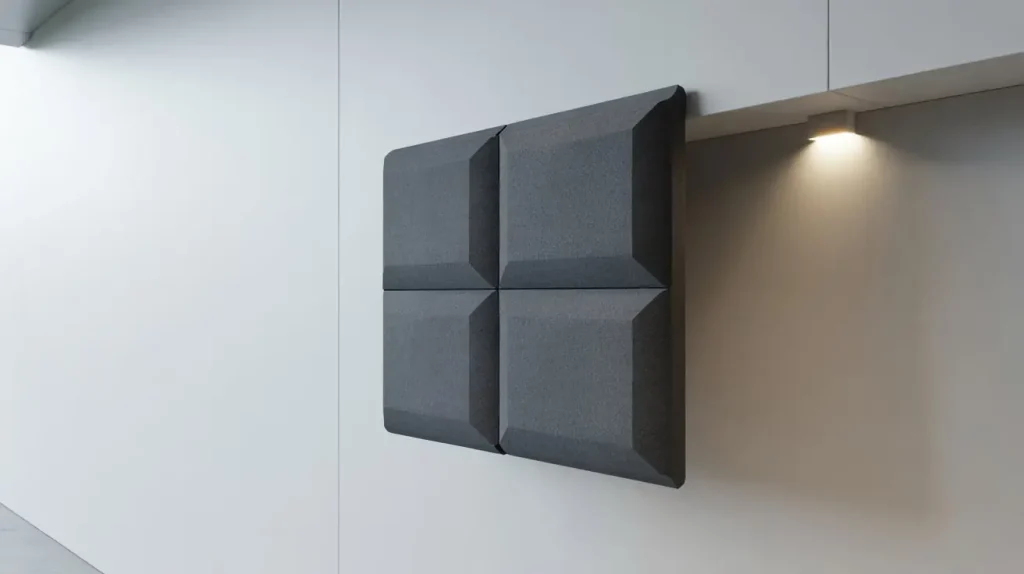
Conclusion: Building Better Sound Environments
Acoustic treatment for halls and auditoriums is not just about reducing noise. It is about creating an environment where every listener has a clear, balanced, and enjoyable experience. By understanding sound behavior, choosing the right treatments, and tailoring solutions to each venue, architects and managers can ensure their spaces meet professional standards.
Whether you are designing a lecture hall, upgrading a concert space, or optimizing a multipurpose auditorium, investing in proper acoustic treatment will pay off in performance quality and audience satisfaction.
Ready to enhance your hall or auditorium with professional acoustic treatment? Start with a detailed acoustic analysis and explore solutions that fit your venue’s needs.

